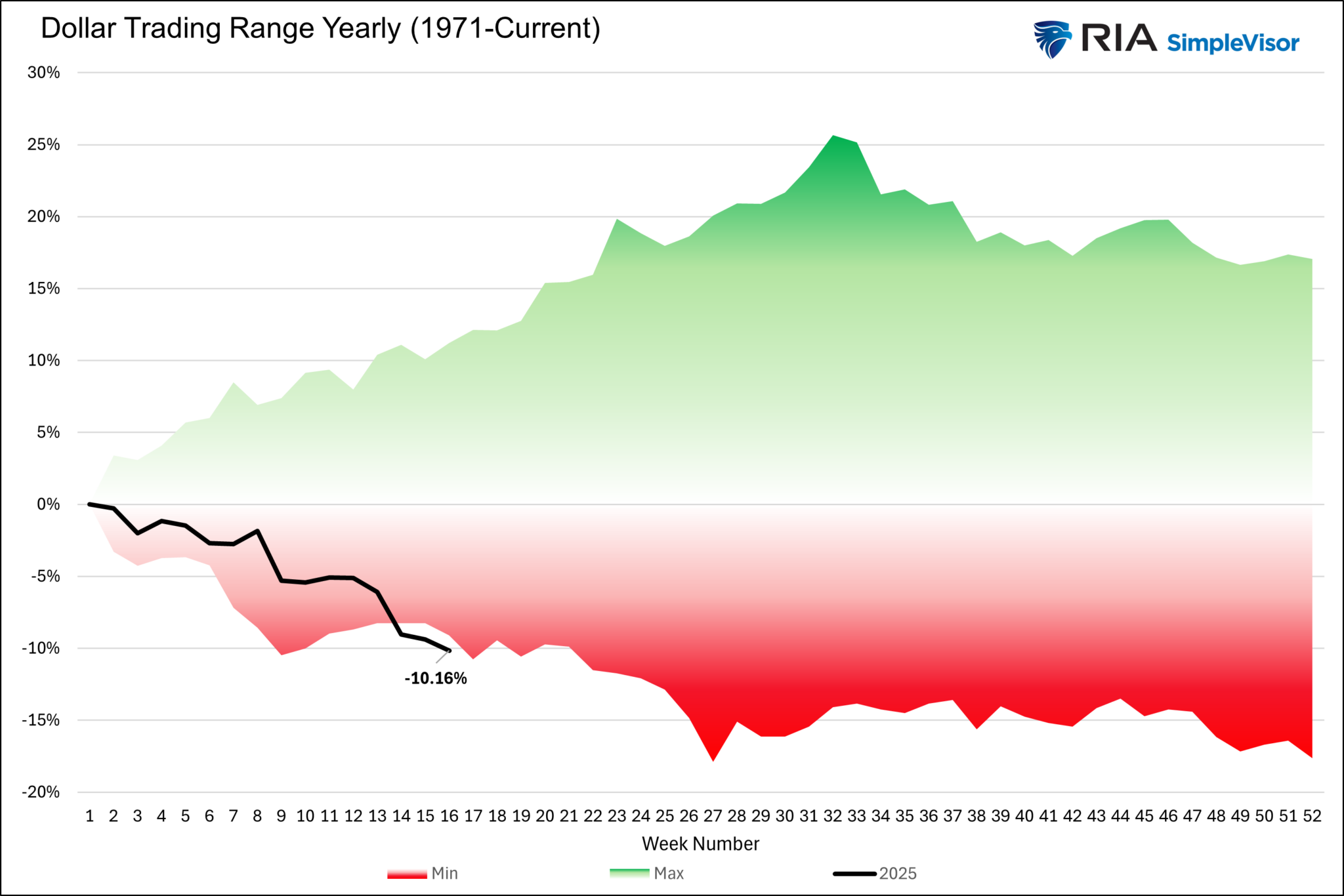UnitedHealth tests AI system to streamline medical claims processing - Bloomberg
Since the start of the year, the S&P 500 is down over 10% and nearly 20% from its January peak. At the same time, Gold is up almost 30%. The stark return differential is excellent news for gold investors, but the clock may be ticking on gold’s outperformance versus stocks.
For historical context of prior periods where gold significantly outperformed stocks in a relatively short period, we share a few facts from a recent analysis by Sentimentrader. Its analysis is based on a signal, whereas the ratio of the price of the S&P 500 to gold fell by at least 25% in three months and to a minimum of a three-year low.
Sentimentrader’s graph below shows the 8 times, including now, that the signal has triggered since the mid-1970s. The red/green lines show the forward performance of the stock-to-gold relationship after its signal.
In the seven prior instances, the S&P 500 beat the price of gold five times in the six months following the signal. Over a full year following the signal, six of the seven periods favored stocks over gold. 2008 stands out as the anomaly.
The graph below shows that the price ratio fell another 35% after the signal was triggered. Moreover, it took over a year before stocks regained their ground versus gold. In all cases, stocks ultimately outperformed gold once their signal was triggered.
We share this analysis because buying gold and selling stocks in the current environment seems like easy money. However, there are times like today when asset relationships get grossly overextended. If you own gold, consider taking some profits. If you are considering selling stocks to buy gold, Sentimentrader’s analysis argues that the trade is closer to the ninth inning than the first.
Excesses in one direction will lead to an opposite excess in the other direction. – Bob Farrell

What To Watch Today
Earnings
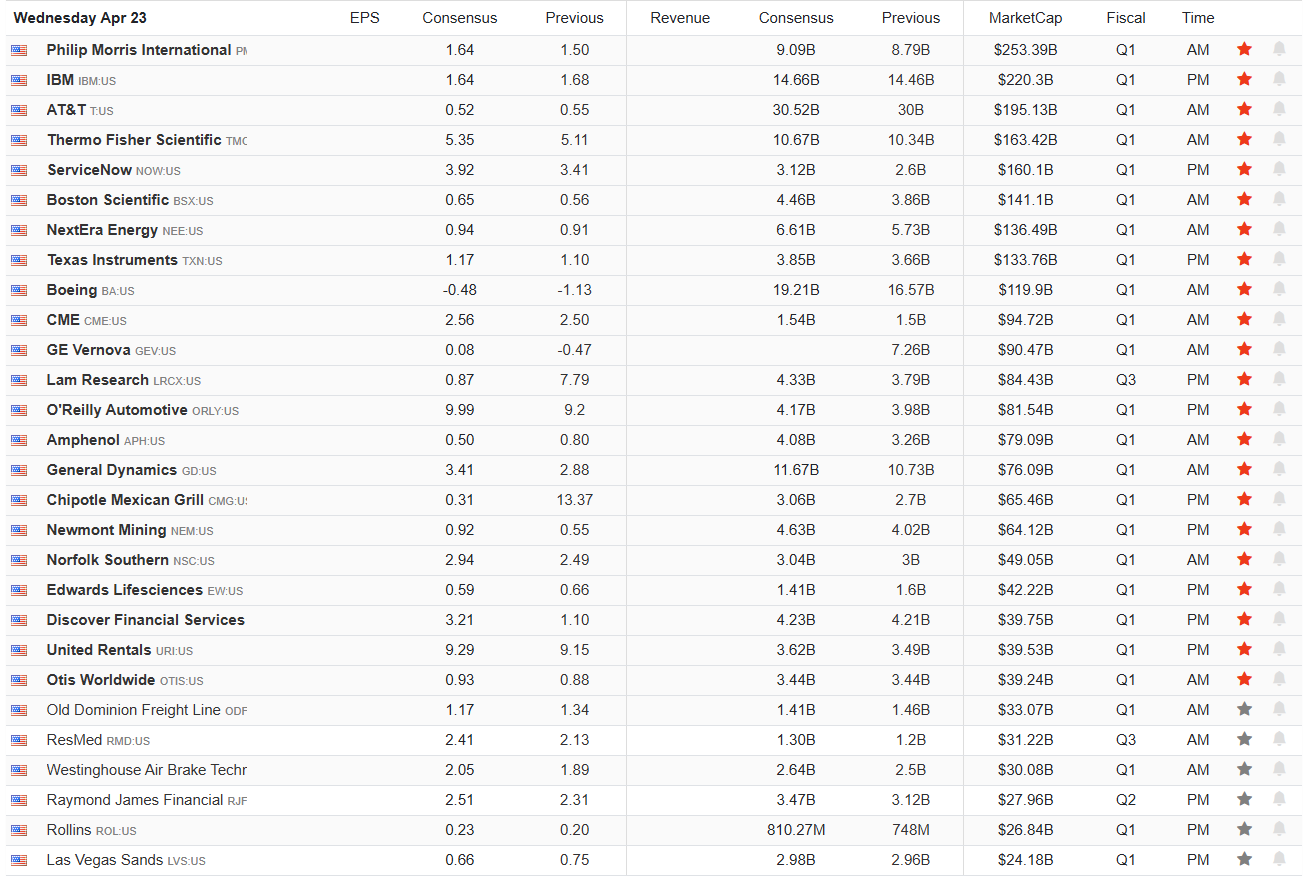
Economy

Market Trading Update
Yesterday, we discussed that while the market has declined, earnings estimates have not, leading to a rather sharp reversion in the previous market overvaluation levels. While we are still early in the earnings estimate revision game, it is notable that analysts are not predicting a massive downswing in earnings heading into 2026. If they are correct, that should start providing a floor for equities.
Tagging on to Michael’s opening comment on gold above, the chart below shows how extreme the current move has been and why, in the coming weeks, we will likely begin taking profits from our gold holdings in our “All-Weather” portfolio. The chart below is MONTHLY, so it is very slow to move.
However, with relative strength now at levels rarely seen historically, a mean-reversion is becoming increasingly likely. While it may seem “impossible,” a correction back to 2100-2200 is entirely possible.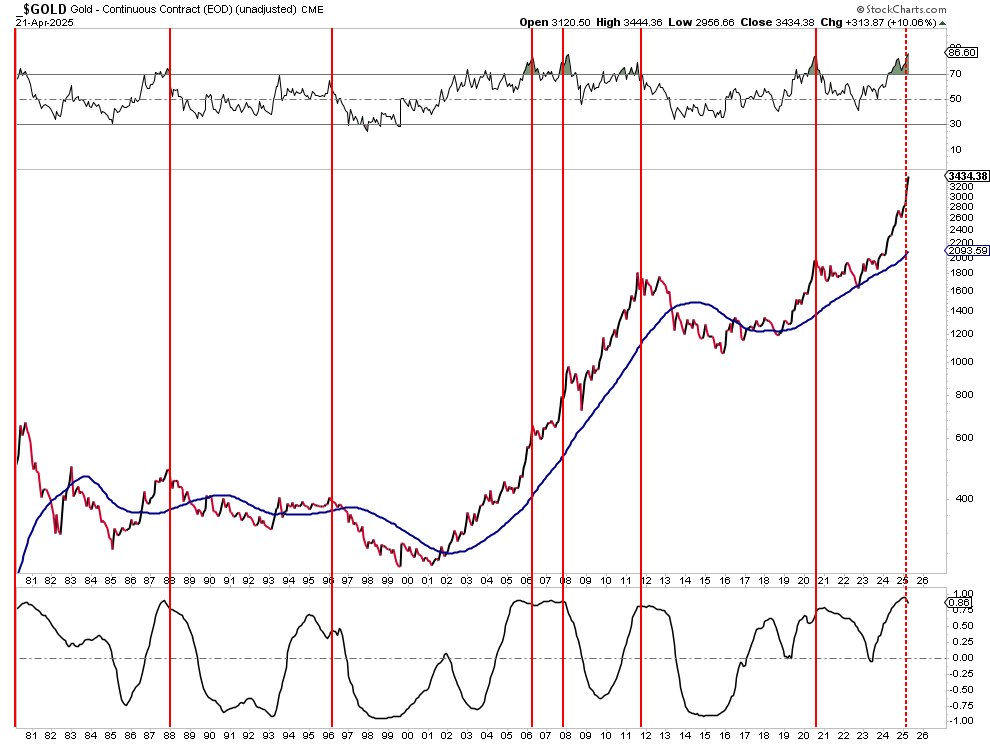
That reversal will coincide with a rally in the US dollar, which is approaching very oversold levels in the near term.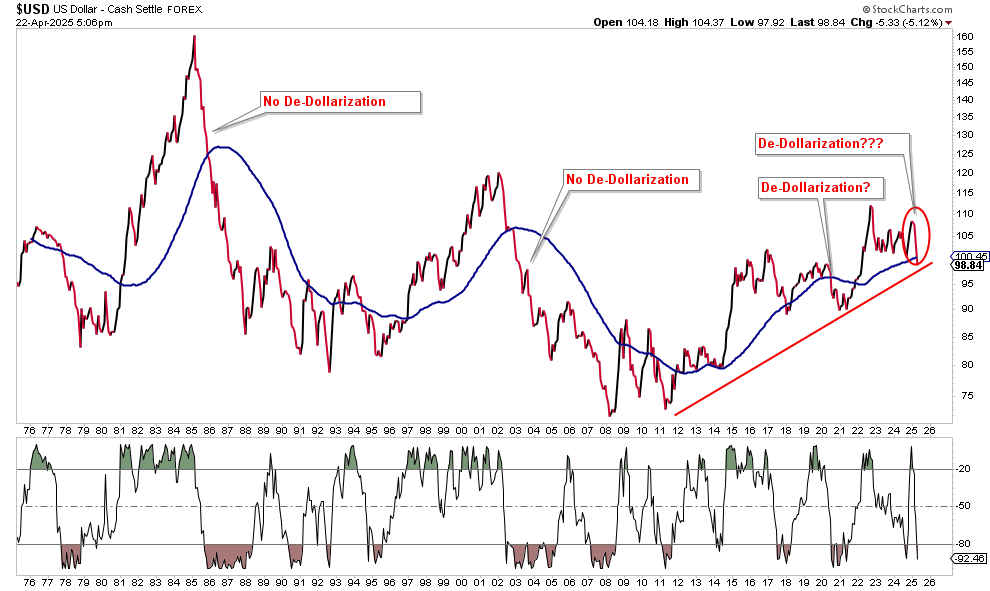
As we will discuss in this weekend’s #BullBearReport, the one mistake investors make when volatility strikes is assuming that since the market is going down, EVERYTHING is going down simultaneously. That is rarely the case.
“The first law of thermodynamics states that, when energy passes into or out of a system (as work, heat, or matter), the system’s internal energy changes in accordance with the law of conservation of energy. This also results in the observation that, in an externally isolated system, even with internal changes, the sum of all forms of energy must remain constant, as energy cannot be created or destroyed.”
In the financial markets, money is not created or destroyed; it merely changes form. As the old Wall Street adage states, “There is always a bull market somewhere.” In other words, as capital is extracted from one asset, that capital is reinvested into another asset. Eventually, that same flow of capital will reverse, and the asset that rose previously will become a source of liquidity to return to what was sold off.
A good recent example of this is Gold versus the S&P 500 index. As shown, there is a very high negative correlation between the 36-month rate of change of the two assets. Simply put, when one rises, it becomes a source of liquidity for the falling asset.
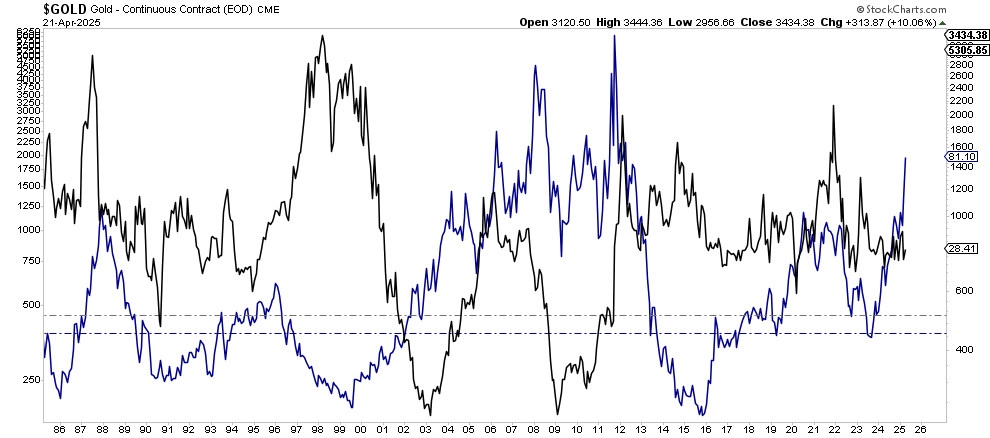
This doesn’t mean that one asset is good or the other is bad, it just means that money is changing form.
Crucially, when volatility strikes, prices disconnect from fundamentals. Investors with emotional discipline can identify undervalued assets while others flee. Such is why the best buying opportunities occur during maximum pessimism, but few are brave or logical enough to act. As Warren Buffett put it plainly:
“Be fearful when others are greedy, and greedy when others are fearful.”
That kind of contrarian thinking requires emotional restraint.
Putting The Dollar Rout Into Perspective
Gold is surging for many reasons, one of which is the weaker dollar. One perceived value of holding gold is as a currency hedge to protect against currency depreciation. Accordingly, let’s put some perspective on the degree to which the dollar has fallen this year to provide insight for how it may help or hinder gold prices.
The graph below shows the range of weekly dollar prices by year since 1971. The black line is the year-to-date price change. The -10.16% decline over the first 16 weeks of the year is the worst in the last 54 years. While the dollar’s decline can certainly continue, especially if little progress is made on tariffs, the historical decline thus far like fortells that at a minimum, a rally is overdue.